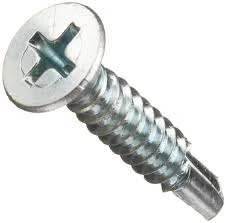Hexagonal Stitching Screw Design for Enhanced Fastening Applications
Understanding Hex Stitching Screws An Essential Component in Modern Construction
In the realm of construction and manufacturing, the emphasis on durability and reliability has led to the development of various fastening solutions. One such innovation is the hex stitching screw, a specialized fastener that has gained traction in various applications due to its unique design and functional advantages. This article delves into the characteristics, applications, and benefits of hex stitching screws, illustrating why they are becoming a staple in modern industries.
What Are Hex Stitching Screws?
Hex stitching screws are a type of fastener characterized by their hexagonal head and often feature a self-tapping design. The hex head allows for better torque application compared to flat or Phillips heads, making them easier to tighten and loosen with a wrench or socket. Typically made from high-strength materials, these screws are engineered to withstand extreme mechanical loads and environmental conditions, making them suitable for diverse applications.
The term stitching refers to their intended function similar to stitching in fabric, these screws are designed to connect multiple components together securely, providing stability and strength to various structures. They are primarily used in metal and wood applications, often found in construction, furniture manufacturing, automotive, and even aerospace industries.
Applications of Hex Stitching Screws
Hex stitching screws are versatile and play a vital role in numerous applications. In construction, they are commonly used for securing metal sheets, framing structures, and connecting various components in steel buildings. Their robust construction allows them to handle the heavy loads typical in such projects, ensuring longevity and structural integrity.
In furniture manufacturing, hex stitching screws are favored for their strength and ease of use. They provide a reliable method for assembling wooden components, ensuring that furniture pieces remain sturdy and long-lasting. Additionally, their aesthetic versatility allows manufacturers to integrate them seamlessly into designs without compromising on style.
hex stitching screw

The automotive sector also benefits from the use of hex stitching screws
. They are used to fasten body panels, attach engine components, and secure various parts under the hood. The ability of these screws to withstand vibrations and repeated stress makes them particularly valuable in this high-performance industry.Advantages of Hex Stitching Screws
There are several key advantages to using hex stitching screws over conventional fasteners. Firstly, the hexagonal head design provides a larger surface area for torque application, minimizing the likelihood of stripping the screw head during installation. This is especially beneficial in high-tension applications where securing the connection with precision is critical.
Secondly, many hex stitching screws feature a self-tapping design, which means they can create their own pilot hole as they are driven into the material. This eliminates the need for pre-drilling, saving time and labor costs during assembly.
Moreover, hex stitching screws are often coated with protective finishes to combat corrosion and prolong their lifespan, especially in outdoor or harsh environments. This resilience ensures that structures remain stable and safe over time.
Conclusion
Hex stitching screws represent a significant advancement in fastening technology, combining strength, ease of use, and versatility to meet the demands of various industries. Their unique design and functional benefits make them a preferred choice for construction, furniture manufacturing, automotive applications, and beyond. As industries continue to evolve and seek out reliable solutions for assembly, hex stitching screws are poised to play an increasingly important role in driving innovation and ensuring structural integrity. Whether securing the framework of a building or connecting components in an intricate device, these screws are essential to modern construction and manufacturing practices, embodying the ingenuity and durability that define today’s engineering solutions.
-
Weatherproof Plastic Expansion Anchors for OutdoorNouvèlJun.06,2025
-
Sustainability in the Supply Chain: Eco-Friendly TEK Screws ProductionNouvèlJun.06,2025
-
Load-Bearing Capacity of External Insulation FixingsNouvèlJun.06,2025
-
Double Head Bolts: Enhancing Efficiency in Industrial MachineryNouvèlJun.06,2025
-
Corrosion Resistance in Chipboard Screws: Coatings for Wholesale DurabilityNouvèlJun.06,2025
-
Butterfly Toggle Bolts : Enhancing Structural ResilienceNouvèlJun.06,2025
